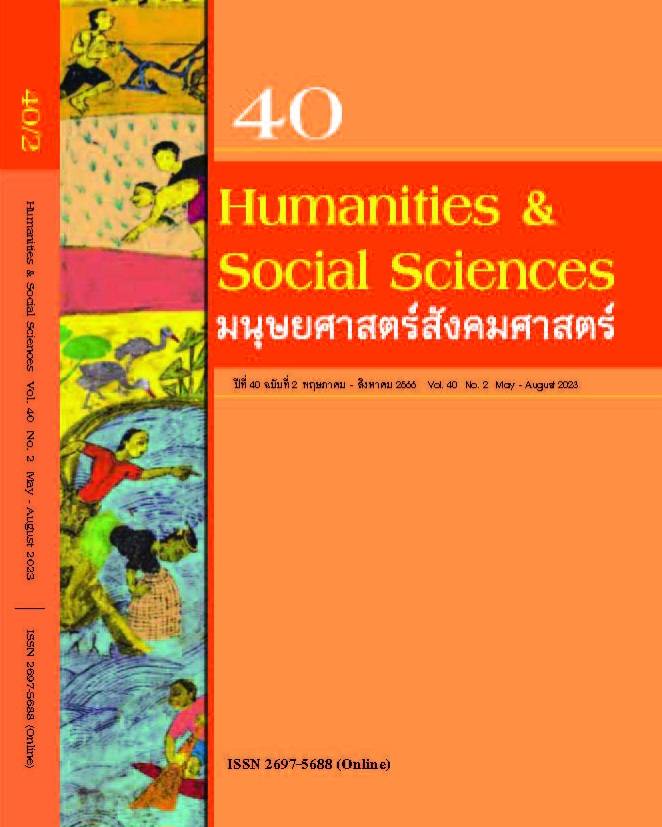วิเคราะห์นโยบายท่องเที่ยวของรัฐบาลเพื่อกระจายจำนวนนักท่องเที่ยวและรายได้การท่องเที่ยว สู่จังหวัดที่ไม่ใช่เมืองหลวงผ่านโครงการระเบียงเศรษฐกิจของประเทศไทย
Dispersal of Visitors and Distribution of Tourism Incomes to Provinces Through Economic Corridors in Thailand: An Analysis of the Government’s Policy
Keywords:
Public Policy, Income Disparity, Economic Corridor, TourismAbstract
The objectives are to examine the government’s tourism policy on dispersal of visitors and distribution of tourism incomes to provinces through economic corridors in Thailand, compare the tourism policy formulation for the economic corridors between Thailand and Malaysia, and propose the recommendations about innovative tourism policy on dispersing tourists and distributing tourism incomes to provinces within the economic corridors and secondary cities in Thailand. The results indicated that the Thai government had formulated the tourism policy for the economic corridors based on their tourism strengths, potentials, and readiness. Such policies are expected to serve as the direction of tourism development and the tourism selling points of each economic corridor, except the Northeastern Economic Corridor. Tourism had not been identified as the engine of growth in this economic corridor. In addition, the Malaysian government used the concepts as Thailand’s to formulate the tourism policy for its country’s regional economic corridors to disperse tourists and distribute tourism incomes to other states. Moreover, the government is recommended to take both demand and supply sides into consideration when formulating the tourism policy, particularly for the provinces located in the economic corridors and secondary cities. For the demand side, the domestic tourism policy should be supported and promoted to disperse tourists and distribute tourism incomes to provinces in the economic corridors and secondary cities through the “We Travel Together” stimulus package. Meanwhile, the innovative tourism policy is pushed toward tourism stakeholders in provinces in the economic corridors and secondary cities through the monetary policy measures. Tourism innovations are expected to manage tourism-related businesses and provide impressive services to tourists and visitors.
References
Athukorala, P.-c., & Narayanan, S. (2017). Economic Corridors and Regional Development: The Malaysian Experience. Manila: Asian Development Bank.
Department of Satistics Malaysia. (2018, September 14). Tourism Satellite Account 2017. Retrieved from Department of Statistics Malaysia: www.dosm.gov.my
Department of Satistics Malaysia. (2021, September 23). Tourism Satellite Account 2020. Retrieved from Department of Satistics Malaysia: www.dosm.gov.my
Department of Statistics Malaysia. (2016, October 14). Tourism Satellite Account 2015. Retrieved from Department of Statistics Malaysia: www.dosm.gov.my
Department of Statistics Malaysia. (2017, September 15). Tourism Satellite Account 2016. Retrieved from Department of Statistics Malaysia Official Portal: https://www.dosm.gov.my/v1/index.php?r=column/cthemeByCat&cat=111&bul_id=c3FvNkJUL0VwaHB6SWMvY2w5NmFuZz09&menu_id=TE5CRUZCblh4ZTZMODZIbmk2aWRRQT09
Department of Statistics Malaysia. (2018). Economic Census 2016: Tourism Statistics. Putrajaya: Department of Statistics, Malaysia.
Department of Statistics Malaysia. (2020, September 18). Tourism Satellite Account 2010. Retrieved from Department of Statistics Malaysia: www.dosm.gov.my
Hill, H., & Menon, J. (2020, May-August). Economic Corridors in Southeast Asia: Success Factors, Development Impacts, and Policy. Thailand and The World Economy, 38(2), 1-12.
Medina, A. F. (2021, April 9). An Overview of Malaysia’s InvestmentCorridors. Retrieved from ASEAN Briefing: https://www.aseanbriefing.com/news/author/asean-briefing/)
Tolentino, C. (2018, December 3). The rise of Asia’s second-tier cities as the new go-to place for tourists. Retrieved from Travel Daily Media: https://www.traveldailymedia.com/mastercard-asia-pacific-destinations-index-2018/
Tourism Malaysia. (2018). Malaysia Tourists Profile 2017/2016 By Selected Markets. Putrajaya: Tourism Malaysia.
Tourism Malaysia. (2020). Malaysia's Tourist Profile By Selected Markets. Putrajaya: Tourism Malaysia.
Zeng, Z., & Wang, X. (2021). Effects of Domestic Tourism on Urban-Rural Income Inequality: Evidence from China. Sustainability, 13(9009), 1-21.
กระทรวงการต่างประเทศ. (2555, กันยายน 20). โครงการพัฒนาความร่วมมือทางเศรษฐกิจในอนุภูมิภาคลุ่มแม่น้ำโขง Greater Mekong Subregion (GMS). Retrieved from กระทรวงการต่างประเทศ: https://www.mfa.go.th/th/content/5d5bcc2715e39c306000a35f?cate=5d5bcb4e15e39c3060006872
จิตคุปต์ ละอองปลิว, จ. (2562, กรกฎาคม-ธันวาคม). การท่องเที่ยวเมืองรอง: ทางเลือกแหล่งท่องเที่ยวเชิงสร้างสรรค์จังหวัดราชบุรี. อินทนิลทักษิณสาร, 14(2), 39-60.
ประเสริฐ ใจสม., ศรีปริญญา ธุปกระจ่าง., ชาญเดช เจริญวิริยะกุล., ปฏิญญา บุญผดุง., & เอื้ออัมพร ทิพยทิฆัมพร. (2563, มกราคม-กุมภาพันธ์). บุพปัจจัยของความยั่งยืนของการท่องเที่ยวเมืองรอง. วารสารสันติศึกษาปริทรรศน์ มจร, 8(1), 133-144.
ผู้จัดการออนไลน์. (2563, มิถุนายน 30). สตง.พบ “นโยบายเที่ยวเมืองรอง รบ.ประยุทธ์ 1” งบกว่า 1.1 พันล. กระจุกตัวแค่บางจังหวัด เฉพาะ 3 จังหวัดท้าย นทท.แค่ 2%. Retrieved from mgronline: https://mgronline.com/tags/สตง. เที่ยวเมืองรอง ประยุทธ์1งบพันล้านกระจุกตัวบางจังหวัด
ศจีนาฏ เรืองกุน., ศุภธิดา หัสดินศ., & พบกานต์ อาวัชนาการ. (2021). ศักยภาพของโครงการ "เราเที่ยวด้วยกัน": จากมุมมองของนักท่องเที่ยวไทยและผู้ประกอบการธุรกิจเกี่ยวกับการท่องเที่ยวของจังหวัดเชียงราย. Journal of Humanities and Social Sciences, 10(1), 75-90.
สำนักงานงบประมาณของรัฐสภา. (2564). ข้อเสนอแนวทางการส่งเสริมท่องเที่ยวเมืองรองเพื่อกระจายรายได้จากการท่องเที่ยว. กรุงเทพมหานคร: สำนักการพิมพ์ สำนักงานเลขาธิการสภาผู้แทนราษฎร.
สำนักงานปลัดกระทรวงการท่องเที่ยวและกีฬา. (2563, เมษายน 16). Review ประเด็นการกระจายนักท่องเที่ยวสู่เมืองรอง . Retrieved from secretary.mots.go.th: https://secretary.mots.go.th/ewtadmin/ewt/ga/download/article/article_20200416204742.pdf
สำนักงานปลัดกระทรวงการท่องเที่ยวและกีฬา. (2563). รายงานสรุปการจัดทำบัญชีประชาชาติด้านการท่องเที่ยวประจำปีงบประมาณ พ.ศ. 2563: โครงการพัฒนาและจัดทำบัญชีประชาชาติด้านการท่องเที่ยว. กรุงเทพมหานคร: กระทรวงการท่องเที่ยวและกีฬา.
สำนักงานส่งเสริมวิสาหกิจขนาดกลางและขนาดย่อม. (2557, พฤศจิกายน 25). โอกาสของ SMEs ไทยสู่ตลาดมาเลเซีย (ตอนที่ 1). Retrieved from sme: https://www.sme.go.th/upload/mod_download
สำนักส่งเสริมการค้าระหว่างประเทศ. (2019, May 6). โครงสร้าง. Retrieved from สำนักส่งเสริมการค้าระหว่างประเทศ: https://www.ditp.go.th/contents_attach/92452/92452.pdf



